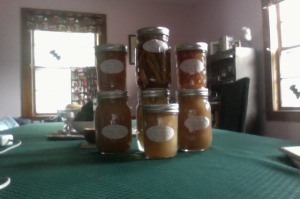There were twenty three of us in Advanced Biology that afternoon for Mr. Chamberlain’s famous water displacement contest/experiment. A couple of hoses, graduated test tubes, and water were all set. The directions were simple: blow into the hose attached to the tube filled with water. Breath becomes air pressure, moving the water into the second tube – water displacement via lung power. The experiment part: measure how much water is displaced by each person and figure out the class average. The contest: try to displace more water than everyone else. The prize: bragging rights and a spot on Mr. Chamberlain’s ongoing chart of winners.
Before we began, Mr. Chamberlain had everyone guess who would displace the most water. To a person, we picked Andy. He was well over six feet tall, played football, and was on the cross country ski team. After that, we picked skiers, long distance runners, and tennis players. Following them, the rest of us. With our predictions set, each of us took our turn moving water with breath.
As predicted, Andy displaced more water than anyone else. The male skiers and runners displaced around the same amount on their tries, clumping around third place. Then came the female athletes. The remaining students were spread out below that. But second place, between Andy and the male athletes, was mine. Five foot two inches, one hundred and fifteen pounds, and able to displace more water than everyone but Andy. It was such a surprising result that Mr. Chamberlain had me do the experiment twice. When the result was the same, he added me to the chart of winners (small letters, with my height, weight, gender, and second place status noted).
I doubt I had a lot more lung capacity than my classmates, but I did spend a lot of time in Chalk Pond. Swimming underwater taught me how to control my breathing. I knew how much air was in my lungs and how far I could swim on a single breath. I was aware that I had reserves of oxygen I usually didn’t need or notice. Perhaps I displaced more water because I knew just how much air I had in reserve, and what I could do with it; perhaps my classmates didn’t.
I think the same is true with my spiritual life. There are reserves that I barely notice and rarely call upon. They are there, ready to displace sadness, grief, anger, and fear. Even better, these spiritual reserves don’t end with my own strength and stamina: they are renewed by the one who gives life and breath to the whole universe.
In the beginning was the Word, and the Word was with God, and the Word was God…All things came into being through him, and without him not one thing came into being… (John 1:1-3)

